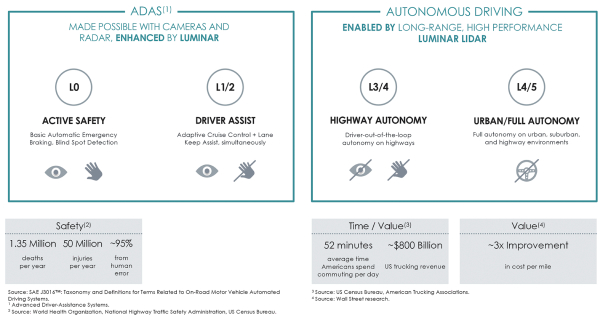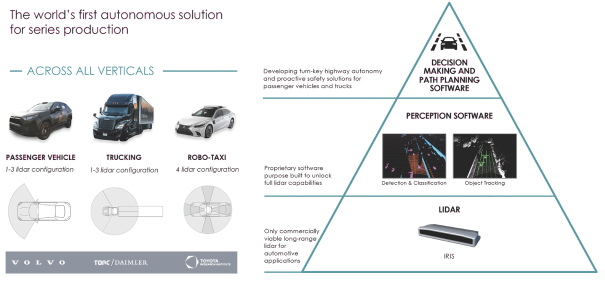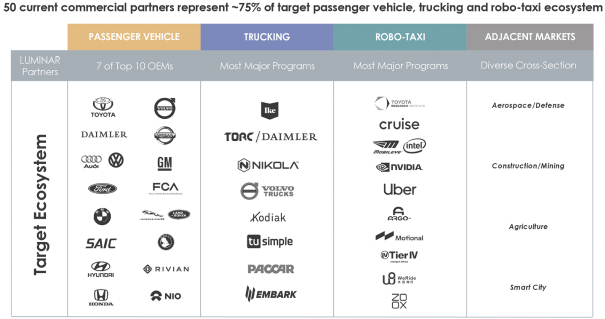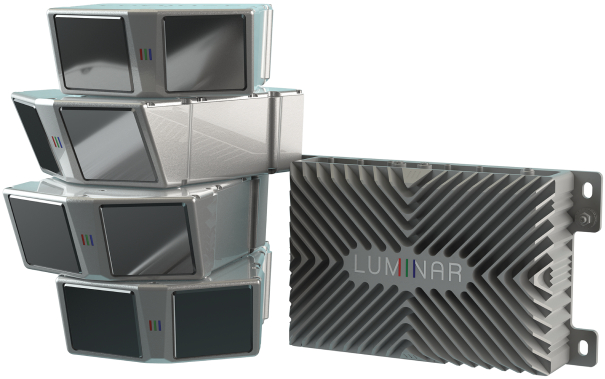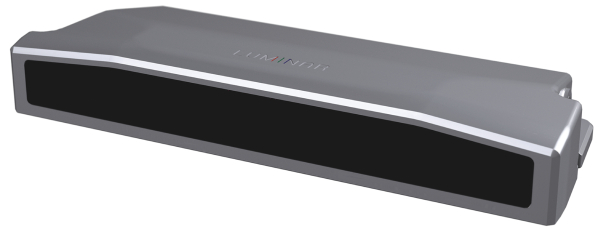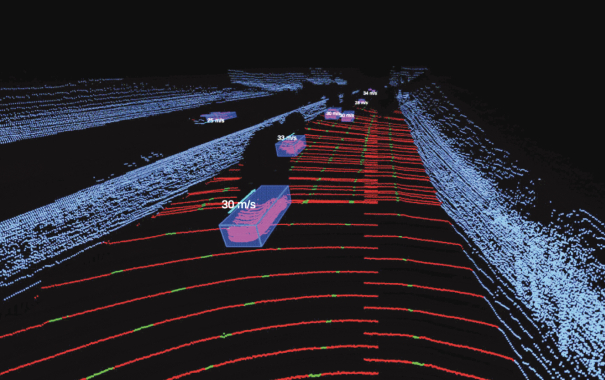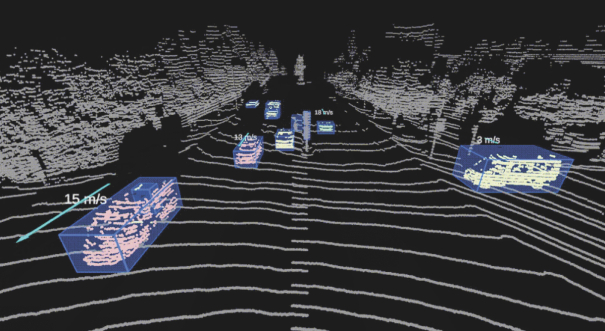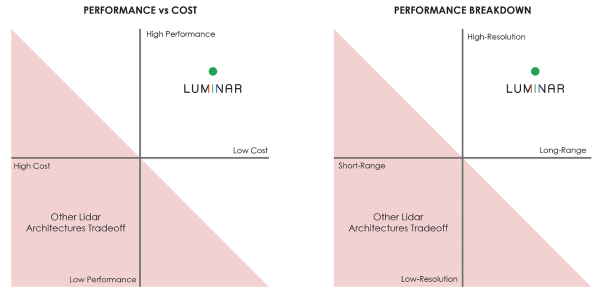As filed with the Securities and Exchange Commission on December
23
, 2020.Registration
No. 333-
UNITED STATES
SECURITIES AND EXCHANGE COMMISSION
Washington, D.C. 20549
FORM S-1
REGISTRATION STATEMENT
UNDER
THE SECURITIES ACT OF 1933
(Exact Name of Registrant as Specified in Its Charter)
Delaware |
3714 |
83-1804317 | ||
(State or Other Jurisdiction of Incorporation or Organization) |
(Primary Standard Industrial Classification Code Number) |
(I.R.S. Employer Identification Number) |
2603 Discovery Drive, Suite 100
Orlando, Florida 32826
(Address, Including Zip Code, and Telephone Number, Including Area Code, of Registrant’s Principal Executive Offices)
Austin Russell
President and Chief Executive Officer
2603 Discovery Drive, Suite 100
Orlando, Florida 32826
Telephone: (407)
900-5259
(Name, Address, Including Zip Code, and Telephone Number, Including Area Code, of Agent for Service)
Copies to:
| Daniel S. Kim, Esq. Mitchell Zuklie, Esq. Hari Raman, Esq. Albert Vanderlaan, Esq. Orrick, Herrington & Sutcliffe LLP 631 Wilshire Boulevard Santa Monica, California 90401 Tel: (301) 633-2800 |
Thomas J. Fennimore, Chief Financial Officer 2603 Discovery Drive, Suite 100 Orlando, Florida 32826 Telephone: (407) 900-5259 |
Approximate date of commencement of proposed sale to the public:
If any of the securities being registered on this Form are to be offered on a delayed or continuous basis pursuant to Rule 415 under the Securities Act of 1933, check the following box. ☐
If this Form is filed to register additional securities for an offering pursuant to Rule 462(b) under the Securities Act, check the following box and list the Securities Act registration statement number of the earlier effective registration statement for the same offering. ☐
If this Form is a post-effective amendment filed pursuant to Rule 462(c) under the Securities Act, check the following box and list the Securities Act registration statement number of the earlier effective registration statement for the same offering. ☐
If this Form is a post-effective amendment filed pursuant to Rule 462(d) under the Securities Act, check the following box and list the Securities Act registration statement number of the earlier effective registration statement for the same offering. ☐
Indicate by check mark whether the registrant is a large accelerated filer, an accelerated filer, a
non-accelerated
filer, a smaller reporting company or an emerging growth company. See the definitions of “large accelerated filer,” “accelerated filer,” “smaller reporting company” and “emerging growth company” in Rule 12b-2
of the Exchange Act. | Large accelerated filer | ☐ | Accelerated filer | ☐ | |||
☒ |
Smaller reporting company | |||||
| Emerging growth company | ||||||
If an emerging growth company, indicate by check mark if the registrant has elected not to use the extended transition period for complying with any new or revised financial accounting standards provided pursuant to Section 7(a)(2)(B) of the Securities Act. ☐
CALCULATION OF REGISTRATION FEE
| | ||||||||
Title of Each Class of Securities to be Registered |
Amount to be Registered(1) |
Proposed Maximum Offering Price Per Share |
Proposed Maximum Aggregate Offering Price |
Amount of Registration Fee | ||||
| Class A Common Stock, par value $0.0001 per share |
194,581,139 (2) |
$26.64 (3) |
$5,183,641,542.96 |
$565,535.30 | ||||
| Warrants to purchase Class A Common Stock |
6,666,666 (4) |
— (5) |
— (5) |
— (5) | ||||
| Total |
$5,183,641,542.96 |
$565,535.30 | ||||||
| | ||||||||
| | ||||||||
(1) |
Pursuant to Rule 416(a) under the Securities Act of 1933, as amended (the “Securities Act”), there are also being registered an indeterminable number of additional shares of Class A Common Stock as may be issued to prevent dilution resulting from stock splits, stock dividends or similar transactions. |
(2) |
Consists of (i) 181,247,830 shares of Class A Common Stock registered for sale by the selling securityholders named in this registration statement (including the shares referred to in the following clause (ii)), (ii) 6,666,666 shares of Class A Common Stock issuable upon exercise of 6,666,666 Private Warrants (as defined below), and (iii) 13,333,309 shares of Class A Common Stock issuable upon the exercise of 13,333,309 Public Warrants (as defined below). |
(3) |
Estimated solely for the purpose of calculating the registration fee pursuant to Rule 457(c) under the Securities Act, based upon the average of the high and low prices of the Class A common stock on December 18, 2020, as reported on The Nasdaq Stock Market LLC. |
(4) |
Represents the resale of 6,666,666 Private Warrants. |
(5) |
In accordance with Rule 457(i), the entire registration fee for the Private Warrants is allocated to the shares of Class A Common Stock underlying the Private Warrants, and no separate fee is payable for the Private Warrants. |
The registrant hereby amends this registration statement on such date or dates as may be necessary to delay its effective date until the registrant shall file a further amendment which specifically states that this registration statement shall thereafter become effective in accordance with Section 8(a) of the Securities Act of 1933, as amended, or until the registration statement shall become effective on such date as the Securities and Exchange Commission, acting pursuant to said Section 8(a), may determine.
The information in this preliminary prospectus is not complete and may be changed. The securities may not be sold until the registration statement filed with the Securities and Exchange Commission is effective. This preliminary prospectus is not an offer to sell these securities and is not soliciting an offer to buy these securities in any jurisdiction where the offer or sale is not permitted.
Subject to Completion. Dated December 23, 2020.
PRELIMINARY PROSPECTUS

Luminar Technologies, Inc.
Up to 181,247,830 Shares of Class A Common Stock
Up to 19,999,975 Shares of Class A Common Stock Issuable Upon Exercise of Warrants and Up to 6,666,666 Warrants
This prospectus relates to the offer and sale from time to time by the selling securityholders named in this prospectus (the “Selling Securityholders”) of up to (A) 181,247,830 shares of our Class A common stock, par value $0.0001 per share (“Class A Stock”), which consists of (i) 10,000,000 shares of Class A Stock (the “Founder Shares”) originally issued in a private placement to Gores Metropoulos Sponsor LLC (the “Sponsor”) in connection with the initial public offering (the “IPO”) of Gores Metropoulos, Inc. (“Gores”), and subsequently distributed to certain equityholders of the Sponsor, (ii) 42,064,871 shares of Class A Stock issued pursuant to the Merger Agreement (as defined below), (iii) 6,666,666 shares of Class A Stock issuable upon the exercise of 6,666,666 warrants (the “Private Warrants”) originally issued in a private placement to the Sponsor in connection with the IPO at an exercise price of $11.50 per share of Class A Stock and subsequently distributed to certain equityholders of the Sponsor, (iv) 105,118,203 Executive Shares (as defined below), (v) up to 3,944,151 Earn-Out Shares (as defined below) that may be issued in the form of Class A Stock pursuant to the earn-out provisions in the Merger Agreement, (vi) up 10,455,134 shares of Class A Stock that may be issued or issuable upon the conversion of any Earn-Out Shares that may be issued in the form of our Class B common stock, par value $0.0001 per share (“Class B Stock”) pursuant to the earn-out provisions in the Merger Agreement, and (vii) up to 2,998,805 shares of Class A Stock issuable upon the exercise of outstanding Rollover Options (as defined below) to purchase shares of Class A Stock, and (B) up to 6,666,666 Private Warrants.
In addition, this prospectus relates to the offer and sale of up to 13,333,309 shares of Class A Stock that are issuable by us upon the exercise of 13,333,309 warrants originally issued in connection with the IPO at an exercise price of $11.50 per share of Class A Stock (the “Public Warrants” and, together with the Private Warrants, the “Warrants”).
The Selling Securityholders may offer, sell or distribute all or a portion of the securities hereby registered publicly or through private transactions at prevailing market prices or at negotiated prices. We will not receive any of the proceeds from such sales of the shares of Class A Stock or Warrants, except with respect to amounts received by us upon the exercise of the Warrants. We will bear all costs, expenses and fees in connection with the registration of these securities, including with regard to compliance with state securities or “blue sky” laws. The Selling Securityholders will bear all commissions and discounts, if any, attributable to their sale of shares of Class A Stock or Warrants. See “Plan of Distribution” beginning on page 153 of this prospectus.
Our registration of the securities covered by this prospectus does not mean that either we or the Selling Securityholders, will issue, offer or sell, any of the securities. All of the Founder Shares (as defined above) and nearly all of the shares issued to the stockholders of Legacy Luminar (as defined below), including shares issued in respect of the Series X Preferred Stock, are subject to lock-up agreements prohibiting the sale of such shares for a period of 180 days after the Closing (as defined below). For more details, please see page 12”
8
of this prospectus under the caption “Certain Relationships and Related Transactions—Lock-Up Agreements
.
Our Class A Stock and Public Warrants are listed on the Nasdaq Global Select Market under the symbols “LAZR” and “LAZRW,” respectively. On December 21, 2020, the last reported sales price of our Class A Stock was $35.15 per share and the last reported sales price of our Public Warrants was $16.05 per warrant.
We are an “emerging growth company” as defined in Section 2(a) of the Securities Act of 1933, as amended, and, as such, have elected to comply with certain reduced disclosure and regulatory requirements.
Investing in our securities involves risks. See the section entitled “Risk Factors” beginning on page 6 of this prospectus to read about factors you should consider before buying our securities.
Neither the Securities and Exchange Commission nor any state securities commission has approved or disapproved of these securities or determined if this prospectus is truthful or complete. Any representation to the contrary is a criminal offense.
The date of this prospectus is , 2020.
TABLE OF CONTENTS
Prospectus
Page |
||||
ii |
||||
vi |
||||
1 |
||||
6 |
||||
43 |
||||
44 |
||||
45 |
||||
46 |
||||
47 |
||||
48 |
||||
59 |
||||
60 |
||||
74 |
||||
104 |
||||
112 |
||||
127 |
||||
133 |
||||
135 |
||||
139 |
||||
153 |
||||
156 |
||||
162 |
||||
162 |
||||
162 |
||||
163 |
||||
F-1 |
||||
You should rely only on the information provided in this prospectus, as well as the information incorporated by reference into this prospectus and any applicable prospectus supplement. Neither we nor the Selling Securityholders have authorized anyone to provide you with different information. Neither we nor the Selling Securityholders are making an offer of these securities in any jurisdiction where the offer is not permitted. You should not assume that the information in this prospectus, any applicable prospectus supplement or any documents incorporated by reference is accurate as of any date other than the date of the applicable document. Since the date of this prospectus and the documents incorporated by reference into this prospectus, our business, financial condition, results of operations and prospects may have changed.
i
ABOUT THIS PROSPECTUS
This prospectus is part of a registration statement on
Form S-1
that we filed with the Securities and Exchange Commission (the “SEC”) using the “shelf” registration process. Under this shelf registration process, the Selling Securityholders may, from time to time, sell the securities offered by them described in this prospectus. We will not receive any proceeds from the sale by such Selling Securityholders of the securities offered by them described in this prospectus. This prospectus also relates to the issuance by us of the shares of Class A Stock issuable upon the exercise of any Warrants. We will receive proceeds from any exercise of the Warrants for cash. Neither we nor the Selling Securityholders have authorized anyone to provide you with any information or to make any representations other than those contained in this prospectus or any applicable prospectus supplement or any free writing prospectuses prepared by or on behalf of us or to which we have referred you. Neither we nor the Selling Securityholders take responsibility for, and can provide no assurance as to the reliability of, any other information that others may give you. Neither we nor the Selling Securityholders will make an offer to sell these securities in any jurisdiction where the offer or sale is not permitted.
We may also provide a prospectus supplement or post-effective amendment to the registration statement to add information to, or update or change information contained in, this prospectus. You should read both this prospectus and any applicable prospectus supplement or post-effective amendment to the registration statement together with the additional information to which we refer you in the sections of this prospectus entitled “.”
Where You Can Find More Information
On December 2, 2020 (the “Closing Date”), Gores Metropoulos, Inc., our predecessor company (“Gores”), consummated the previously announced mergers contemplated by the Agreement and Plan of Merger, dated as of August 24, 2020 (the “Merger Agreement”), by and among Gores, Dawn Merger Sub, Inc., a Delaware corporation and a direct, wholly-owned subsidiary of Gores (“First Merger Sub”), Dawn Merger Sub II, LLC, a Delaware limited liability company and a direct, wholly-owned subsidiary of Gores (“Second Merger Sub”), and Luminar Technologies, Inc., a Delaware corporation (“Legacy Luminar”). Pursuant to the terms of the Merger Agreement, First Merger Sub merged with and into Legacy Luminar (the “First Merger”), with Legacy Luminar being the surviving corporation of the First Merger, immediately followed by the surviving corporation merging with and into Second Merger Sub (the “Second Merger” and, collectively with the First Merger and the other transactions contemplated by the Merger Agreement, the “Business Combination”), with Second Merger Sub continuing as the surviving entity as a wholly owned subsidiary of Gores, under the name Luminar Holdco, LLC. On the Closing Date, and in connection with the closing of the Business Combination (the “Closing”), we changed our name from Gores Metropoulos, Inc. to Luminar Technologies, Inc.
Unless the context indicates otherwise, references in this prospectus to the “Company,” “Luminar,” “we,” “us,” “our” and similar terms refer to Luminar Technologies, Inc. (f/k/a Gores Metropoulos, Inc.) and its consolidated subsidiaries. References to “Gores” refer to our predecessor company prior to the consummation of the Business Combination.
ii
